There’s something rather special about wetlands – and not just because they’re becoming increasingly rare. There is an air of secrets and mystery, of strangeness lurking just below the waterline. There is, for example, the mudfish.

Mudfish are fish without scales that can survive without water – which makes for a very odd fish indeed. They have thick, slippery skin and look a bit like eels and when their surface water dries mudfish can survive by slowing their metabolism and breathing oxygen through their skin. Usually it’s a short-term survival mechanism, but mudfish have been known to live without water for months.
Mudfish are only one of the secretive creatures living in the 400 Ha Mangarakau Wetlands, the largest remaining wetland in the Nelson/Marlborough region. The mudfish living there are a genetically distinct group, isolated from interbreeding with other mudfish populations and so are rather special. But there are other secretive creatures too…
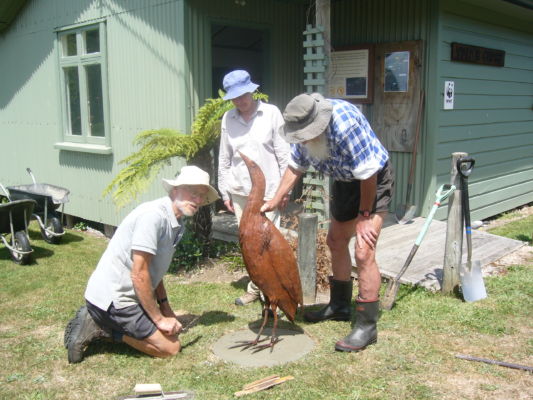
Last year Robyn Jones began to notice footprints in the mud. Robyn is Chairperson of the Friends of Mangarakau, a volunteer group which traps, weeds, replants, builds tracks and generally cares for the wetlands. They were bird prints, but what bird?
Not long after the footprints started appearing, fellow volunteer David Morgan arranged for Colin O’Donnell from DOC’s Christchurch office came up to Mangarakau with his recording equipment to survey for bitterns. David helped Colin set up the recording equipment and, playing and recording bittern calls at dawn and dusk, Colin identified 10-15 different males replying to the recordings. That number was, in itself, a surprise. But the most exciting surprise for David, Robyn and the Friends of Mangarakau, was learning that they also had an extensive population of spotless crake!
Spotless crake are tiny birds and Robyn says they’re hard to see. Their footprints have been seen in 13 different places now and the crake sometimes run across tracks, so that Robyn has caught a quick glimpse of them. She’s spent ages watching, trying to get a photo of the secretive birds, but so far without success.
Fellow volunteer Murray Gavin sometimes plays recorded crake calls as he works on his stretch of the wetlands tracks. Once when Murray and Robyn were talking, a spotless crake suddenly called back from right in front of them. Robyn and Murray were stunned. They’d had no idea there was a bird so close.
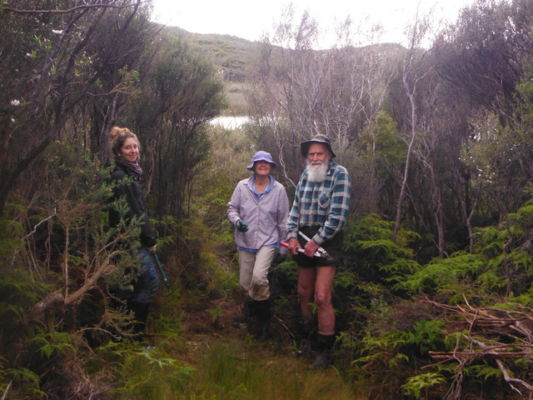
Spotless crake call at all times of the day, but the equally secretive and very similar-sounding marsh crake calls only at dawn and dusk. Robyn thinks there may be marsh crake at Mangarakau too and she’s hoping that when Colin O’Donnell comes back to do his next survey in Spring 2016, he’ll identify them.
In the meantime there’s work to be done. Robyn has been involved with the Friends of Mangarakau for about 10 years, joining the group not long after it was formed. She lives nearby and runs a stream care nursery in Collingwood, planting stream banks on farms.
Initially it was her involvement with plants that brought Robyn to Mangarakau, looking after native plants and helping with weed control. Blackwoods (wattle) planted at Mangarakau in the 1970s are a nightmare, says Robyn. The old trees are long gone, but 10 years later, seedlings are still popping up where-ever there is a patch of light.
Nowadays Robyn is involved in predator trapping at Mangarakau too. It is, says Robyn, the most important thing they do and she’d like to find a way to “ramp it up”. Both DOC 200 and Victor rat traps are used in the 400Ha of wetlands. Now that the stoats have been caught, she’s finding there are lots of rats. The Friends also use bait stations for rats as they find that traps only catch a few. At the bait stations, lots gets eaten, Robyn says.
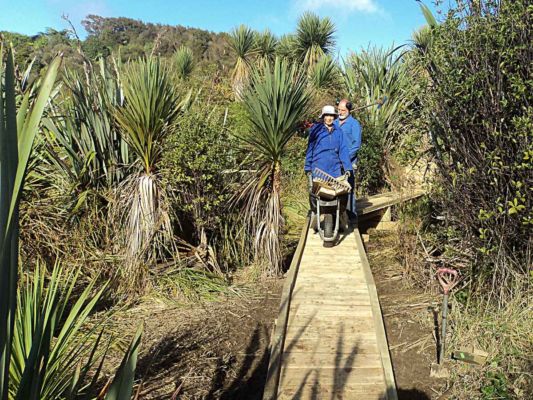
Mice are another issue. They’re everywhere and Robyn finds that whenever peanut butter is used on the rat traps, the mice manage to eat it without triggering the traps. Poison bait is used to tackle the mice too.
Giant land snails (Powelliphanta) live across the road from the wetlands, so the Friends have extended their trapping to cover that area, both to protect the snails and to keep outside pests from moving into Mangarakau.
Recent projects in the wetlands have included a new 800m track and two new bridges – funded by a $20,000 legacy that came “out of the blue” last year. The couple who left the legacy were ‘Forest & Bird’ people from outside the district, says Robyn. They’d been to the opening of Mangarakau, when it was first purchased by the Forest Restoration Trust and had left the money to the Trust to be used for Mangarakau.
John Barraclough and Bronwen Thorneycroft built the two new bridges and created the Wattle Point Track. The Takaka couple are keen volunteers and often bring their house bus to Mangarakau, staying for several days at a time to help out.
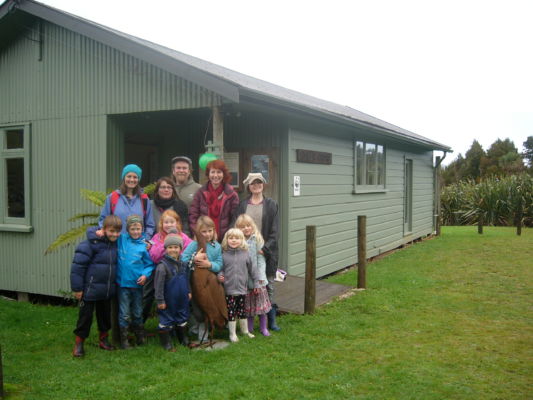
Other volunteers and visitors often stay at the Lodge, a house on a hill overlooking the wetlands, that was there when the Forest Restoration Trust purchased the wetlands. A lot of work has been done on the Lodge recently – also as a result of that fortuitous legacy.
Recent Lodge visitors have included a group of children from “Forest & Bird’s” Kiwi Conservation Club. To the delight of the 5-6 year-olds, they were able to hand-feed mealworms to Harry the Robin. A 3-year-old with the group declared “sharp beak” and declined to take part! Two robin pairs nest alongside a track in the wetlands and have become quite used to volunteers and visitors.
As well as robins, bitterns and crake, there are “lots of fernbirds” – they’re probably the most common bird at Mangarakau, Robyn says. There are tomtits too, along with grey warblers, brown creepers, long-tailed cuckoo, bellbirds, tui and moreporks. Two kaka have been spotted across the road from the wetlands and kea and falcon are sometimes seen.
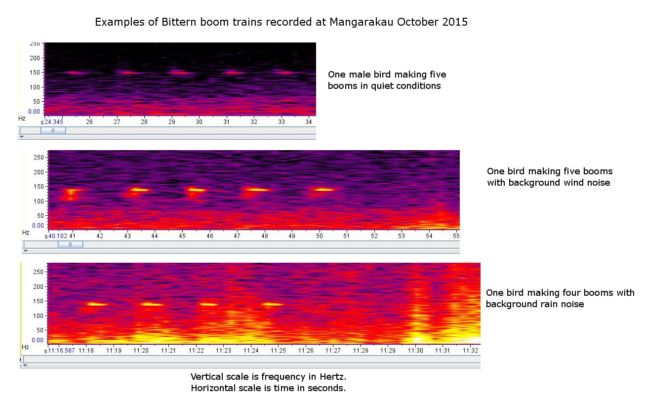
Mangarakau Wetlands is a special place and Robyn and her team are hoping that specialness will soon receive international recognition. A RAMSAR (International Convention on Wetlands) application has been written for Mangarakau to be recognised as a wetland of international significance, but the application process is a long one.
In the meantime Robyn is looking forward to another bittern survey in spring. A computer application can read the recorded bittern “boom trains” for statistical analysis. The call is ‘spooky’ says Robyn – a very deep boom. Sometimes all the males will boom all night.
Perhaps that spring survey will help solve another mystery. Are there marsh crake living secretly at Mangarakau too? Robyn is certainly hoping so.

